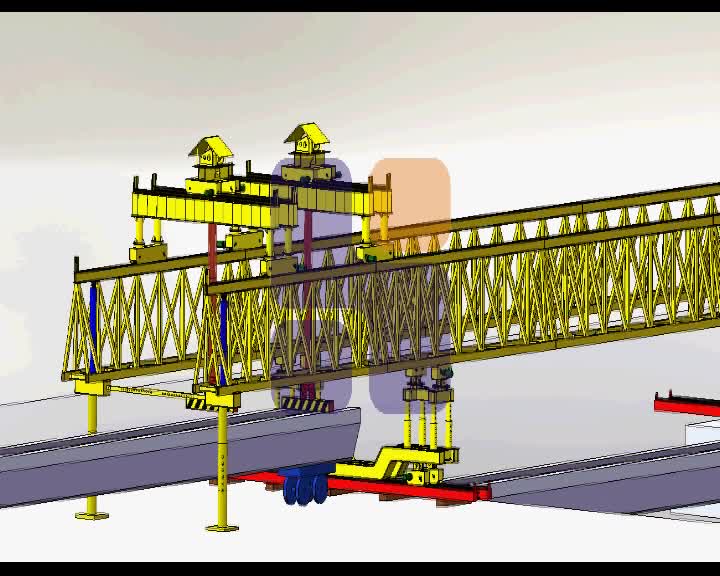Railway bridges are precise structures requiring a profound knowledge not only of structural engineering but also of the operations and security necessities of tracks used daily by great numbers of travelers. They use special erection tools for girders, box beams, trusses, arches, and cable-stayed and suspension cable bridges. Apt accessibility, a hiring capability, and a qualified erection team will be compulsory. Also, the contractor will require ready access to long-span freight vehicles to convey assembled bridge machinery, high-capacity cranes, excavation tractors, torque wrenches, etc. to competently transport the subassemblies of bridges and erect the bridges.
The considerations in beam erection
• Timing:
When dealing with the construction or replacement process in railway engineering, the dynamic feature of the design follows time: so operations, safeguarding, and new production are all relevant factors that the designer should examine vigilantly for the correct beam erection.
• Simplifying manufacture:
Simple constructions are usually preferable to composite solutions and basics such as plain spans and bolted assembly are still extensively using in railway bridges, while incessant spans with weld stiffeners are typical to observe in railway bridge plan. The exploitation of bolted structure reduces weariness requirements, and simple spans allow the substitution of each entity span, thus reducing traffic interruptions.
•Pre-casting:
A direct result of the preceding points is that it is becoming an ordinary observe to plan and upright spans in the nearly absolute form to accelerate span insight. Steel spans and precast concrete box beams, as well as other superstructure types, may be shipped to a construction site in a preassembled manner.
How to do beam erection
Beam erection for the railway is a technique of skill and practice. While installing a single beam, one should consider several things. Not only for the beams, but it is similar for the girt, purlins and horizontal tubes fixed with bolts.
- For using a stanchion post-fall protection system, the carrier beams protect them from falling forward.
- Try to use appropriate chokers, so that one can attach the rigs at the exact center of the load.
- To place the beam in position, you have to seek the help of a crane operator. By adjusting the crane line above the rigging point, you can place the beam on the exact position with crane movements.
- Before the weight is placed on the connection plates, we should ensure structural integrity. For this, use bolts or welds at the proper place on the beam.
- Provide enough lateral support to the beam through the columns. Use of the crane beams, girt, outriggers will be useful in loading the column to its maximum.
- Once the crane can withstand the full weight, check the structural stability of the component. We can remove the choker if it is secure. And still, you feel it unstable, with the help of temporary bracing, you can make it secure.
Final Words:
In the bridge erection process, there may be many challenges in the way for a contractor. Without compromising the quality, he should manage the process. The erection contractor may use robotics and different types of cranes. For this, he can purchase it from authentic dealers.




